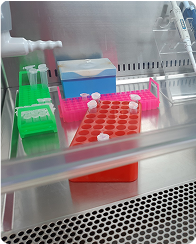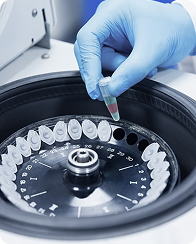Capillary Liquid-Liquid Extraction Insert
The main unit, a precision capillary insert, holds the sample and features a U-shaped bottom with an ultra-fine orifice.
The capillary orifice is hydrophilic or hydrophobic, enabling the selective flow of the desired liquid phase.
Second unit: The separated phase is eluted into a vial selected by the user.








CLLEVERT is available in several design variants, allowing users to select the model best suited to their analytical protocol.
The separation procedure operates under atmospheric pressure or centrifugal force, with both modes ensuring rapid and well-defined phase separation within tens of seconds.

The traditional liquid–liquid extraction method is often replaced by Solid Phase Extraction (SPE). However, SPE columns suffer from high dead volumes in frits and sorbents, leading to analyte loss and requiring multiple, solvent-intensive steps. At the same time, current liquid–liquid extraction techniques remain labour-intensive, largely manual, and difficult to automate. To address these challenges, we developed CLLEVERT (Capillary Liquid–Liquid Extraction Insert) — a patented device and method for pre-analytical sample preparation that combines the advantages of both SPE and liquid–liquid extraction. The market potential is significant: the SPE market is projected to grow from USD 450 million to USD 846 million (2023–2033) [1], while the liquid–liquid extraction market is expected to expand from USD 2.8 billion to USD 4.5 billion (2023–2032) [2].
[1] Solid Phase Extraction SPE Market Report | Global Forecast From 2025 To 2033 [2] Liquid Liquid Extraction Equipment Market Report | Global Forecast From 2025 To 2033 (Liquid Liquid Extraction Equipment Market Size, Trends, Industry Outlook & Forecast 2033)
CLLEVERT is an innovative product with strong commercial potential across multiple industries — including biomedical and research laboratories, pharmaceutical production, food science, and environmental testing.
The device is designed for scalable manufacturing in cleanroom environments using standard plastic injection molding technology. This ensures efficient, high-quality production with minimal adaptation to existing equipment and processes.
CLLEVERT patented technology is available for licensing.
We offer exclusive licenses for defined territories or application areas, including rights for sublicensing. Each license agreement is complemented by a cooperation framework that supports further development and optimization of the technology in collaboration with our team.